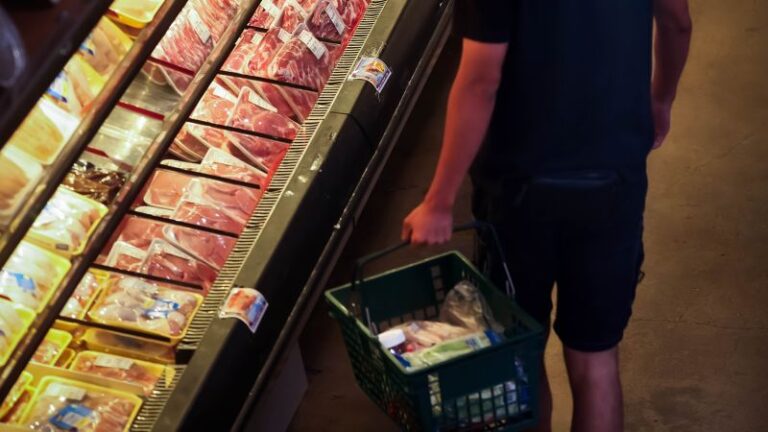A version of this story will appear in CNN Business’ Nightcap newsletter. To get it in your inbox, sign up for free here.
New York
—
Two key reports released Thursday showed the US economy may be in a state of early-onset stagflation — a toxic one-two punch of slow economic growth and rising prices.
That’s a particularly problematic combo because slow economic growth should, in normal times, drag prices down, not up. It’s Econ 101: When people are out of work or worried about losing their jobs, they spend less, spurring businesses to lower prices. If people can’t afford things but prices go up anyway, that’s a sign something is deeply broken.
See here:
Consumer prices rose 0.4% in August, driving the annualized inflation rate to 2.9% — the highest since January. That was up from 2.7% in July.
At the same time, first-time applications for unemployment benefits surged last week to their highest level in four years. An estimated 263,000 people filed initial unemployment insurance in the week ended September 6, according to Department of Labor data released Thursday.
“The whiff of stagflation is getting stronger,” Harvard economics professor Jason Furman wrote on Bluesky Thursday. “There are no good options for the Fed given the set of circumstances we’re facing.”
Let’s step back.
“Stagflation” is a portmanteau of stagnation and inflation, and it’s a scary diagnosis for an any economy.
Think about the inflationary era of 2022 — prices were high and rising faster than most Americans had ever experienced, which, to borrow a technical term, sucked. But there was a booming labor market underpinning that inflation. Wages (in aggregate) were rising and stimulus checks were still padding people’s wallets, so the suck was a tad more manageable.
Take away the booming job market and you’ve just got the suck of inflation piling onto the suck of rising unemployment. Double suck.
That is hard on consumers for obvious reasons. It’s also a policy puzzle for the folks at the Federal Reserve (who are, in addition to doing their regular jobs, dealing with the White House trying to either fire them or pressure them to do President Donald Trump’s bidding).
The Fed’s role is basically to work the gas and brake pedals on the economy. When inflation gets too hot, the central bank will raise interest rates, effectively tapping the brakes. When unemployment goes up, the Fed usually lowers interest rates to try to give the economy some gas.
The Fed simply doesn’t have the ability to slow down and speed up at the same time. It can’t goose employment without also goosing prices.
That’s partly why next week’s Fed policy meeting will be even more closely dissected than usual. The other reason is because Trump’s top economic adviser, Stephen Miran, could get Senate confirmation to the Fed’s seven-member Board of Governors as soon as Monday, just before the central bank’s two-day meeting kicks off on Tuesday.
Spoiler alert: The Fed will almost certainly lower interest rates next week, as Chair Jay Powell said as much, citing the recent weakness in the labor market. The question is the size of that rate cut, and whether the standard quarter point or half point will be enough to get Trump — who wants far more aggressive cuts — off the Fed’s back.
